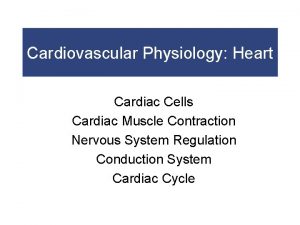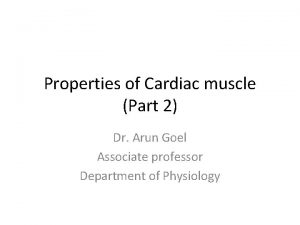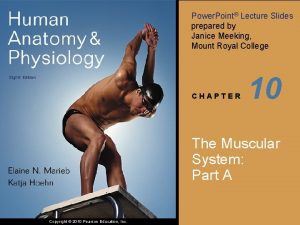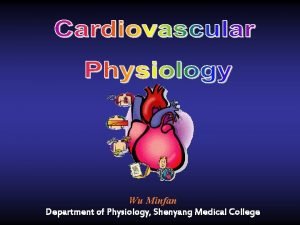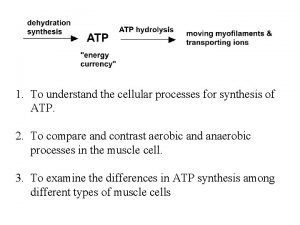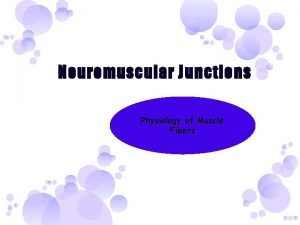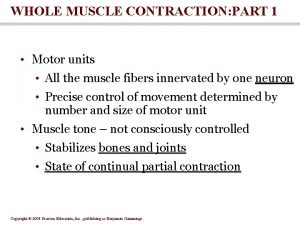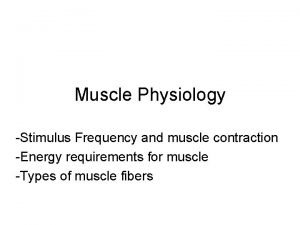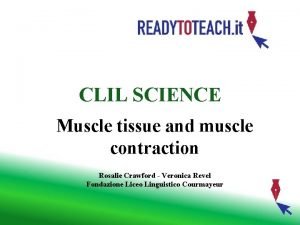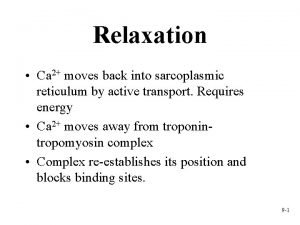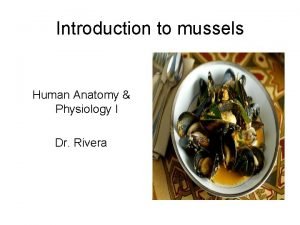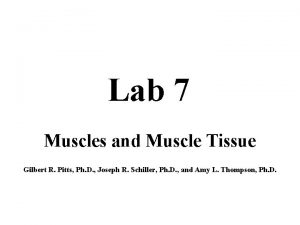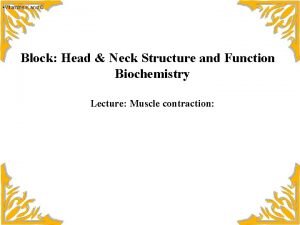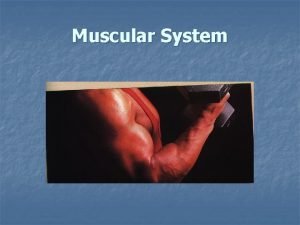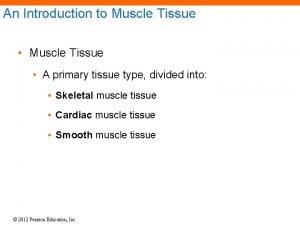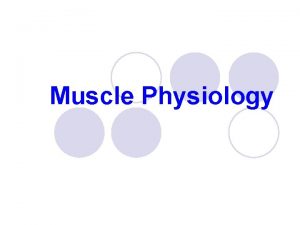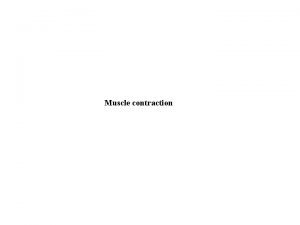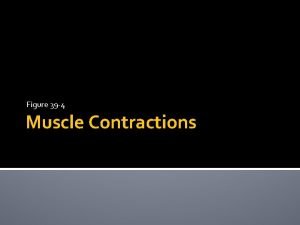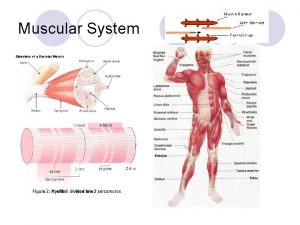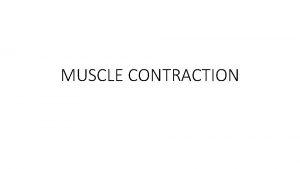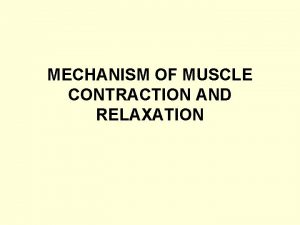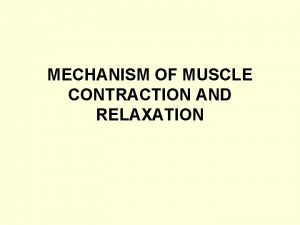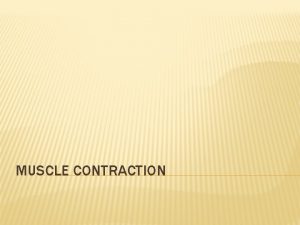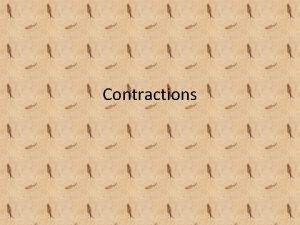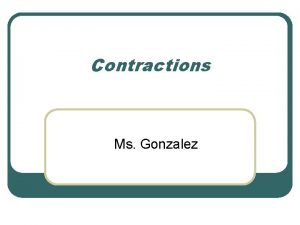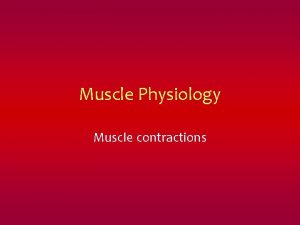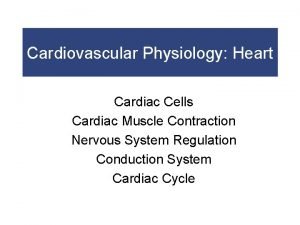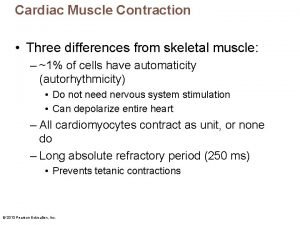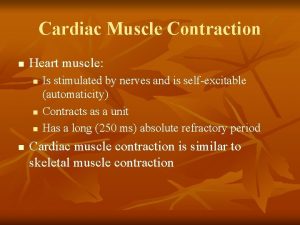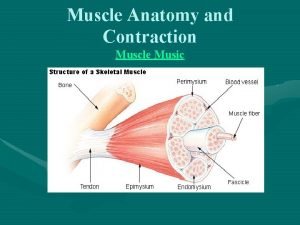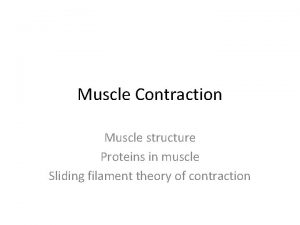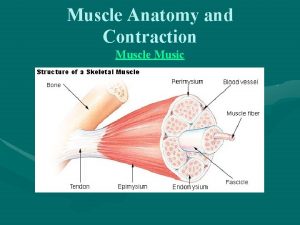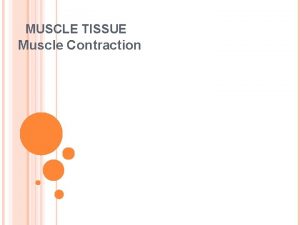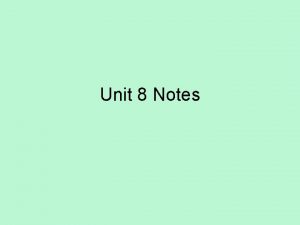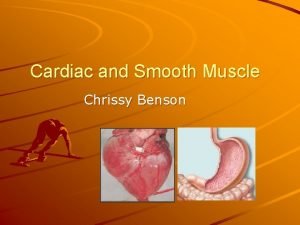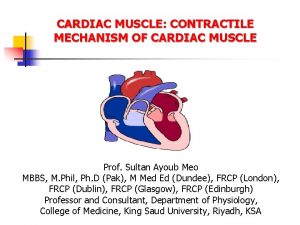Regulation of cardiac muscle contraction Graded contractions Effect




















- Slides: 20

Regulation of cardiac muscle contraction • Graded contractions • Effect of cardiac muscle stretching • Channel activity during action potentials – In myocardial contractile cells – In autorhythmic pacemakers

Graded contraction • The amount of force varies with the number of cross-bridges formed • Low Ca++ few cross-bridges • High Ca++ more cross-bridges

The effect of epinephrine and norepinephrine of contraction • NE and E bind to beta 1 receptors on contractile myocardial cells • The beta 1 receptor is coupled to a G protein • Cyclic AMP is formed

The effect of epinephrine and norepinephrine of contraction • cyclic AMP is formed • 1. Voltage gated Ca++ channels are phosphorylated stay open longer more intracellular Ca++ stronger contractions • 2. A regulatory protein, phospholamban, is phosphorylated increased activity on SR Ca++ ATPase contractions shorten duration

Effect of phospholamban on Ca++ release • NE and E activity increase phospholamban activity increase Ca++ ATPase activity on SR more Ca++ is sequestered into the SR more Ca++ is available for Ca++ release during stimulation stronger force of contraction

Effect of NE and E on contraction • Stronger, more frequent contractions

When myocardial cells elongate • The amount of Ca++ entering the myocardial cells may increase the force of contraction increases

Myocardial contractile cell action potentials • Resting potential is stable -90 m. V • Wave of depolarization through gap junctions • Voltage gated Na+ channels open • Voltage gated K+ channels open • Slow voltage gated Ca++ channels open and K+ channels close • Ca++ channels close and K+ channels open




Long action potential • Myocardial cell refractory period and contraction end simultaneously

Action potentials in myocardial autorhythmic cells • The channels: – If channels allow passage of Na+ and K+ – Ca++ channels


Action potentials in myocardial autorhythmic cells • Unstable resting membrane potential • Pacemaker potential • At a membrane potential of -60 m. V Na+ enters through the If channels • mb depolarizes • Ca++ channels open • Ca++ channels close • K+ leaves



Modulation of autorhythmic cells • NE (sympathetic) and E (adrenal hormone) • Autorhythmic cells have beta 1 receptors • Cyclic AMP levels increase • Properties of If and Ca++ channels altered • More rapid Na+ and Ca++ entry • Rapid action potential • Rapid contractions

Modulation of autorhythmic cells • Parasympathetic, acetyl choline • Muscarinic receptors • K+ channels open mb hyperpolarizes cell less excitable • Ca++ channel less likely to open slower depolarization cell is less excitable

 Smooth muscle cell
Smooth muscle cell Membrane potential of cardiac muscle
Membrane potential of cardiac muscle Cardiac excitation-contraction coupling
Cardiac excitation-contraction coupling Flexor carpi ulnaris
Flexor carpi ulnaris Homometric regulation of cardiac output
Homometric regulation of cardiac output Phases of muscle contraction
Phases of muscle contraction All or none principle of action potential
All or none principle of action potential Incomplete tetanus muscle contraction
Incomplete tetanus muscle contraction Myopathy
Myopathy Muscle spasm
Muscle spasm Muscle contraction
Muscle contraction Phases of muscle contraction
Phases of muscle contraction Isotonic exercise
Isotonic exercise Latent phase muscle contraction
Latent phase muscle contraction Muscle contraction biochemistry
Muscle contraction biochemistry Muscle system
Muscle system Titin
Titin Incomplete tetanus muscle contraction
Incomplete tetanus muscle contraction Muscle contraction
Muscle contraction Muscle contraction animation mcgraw hill
Muscle contraction animation mcgraw hill Passive insufficiency of hamstrings
Passive insufficiency of hamstrings

